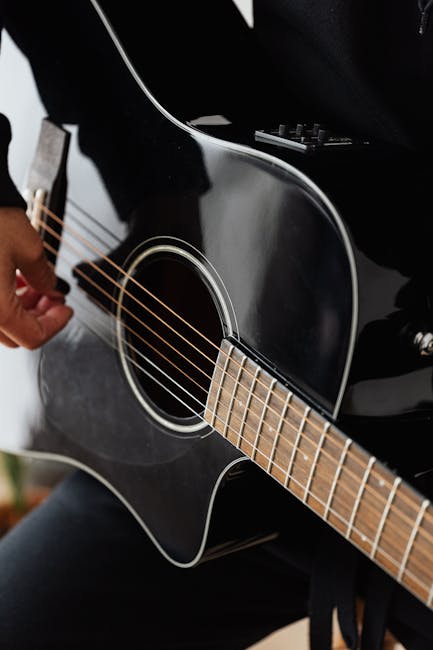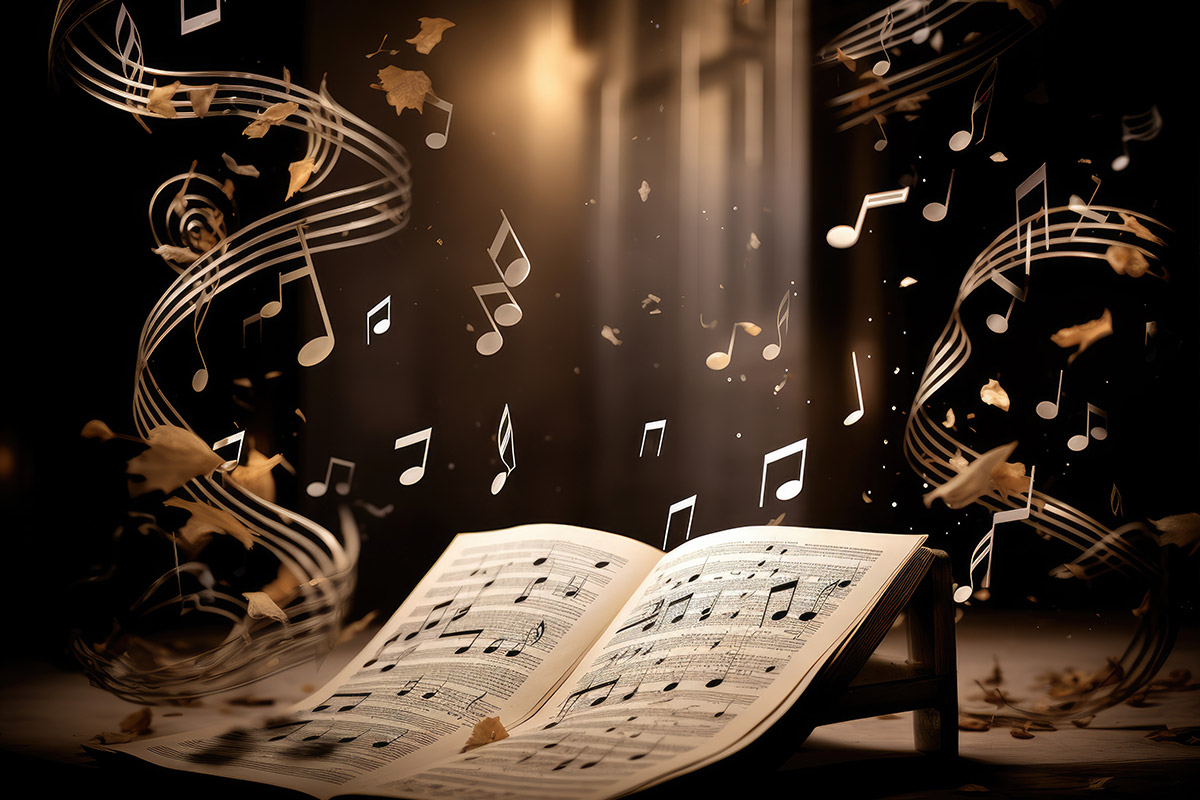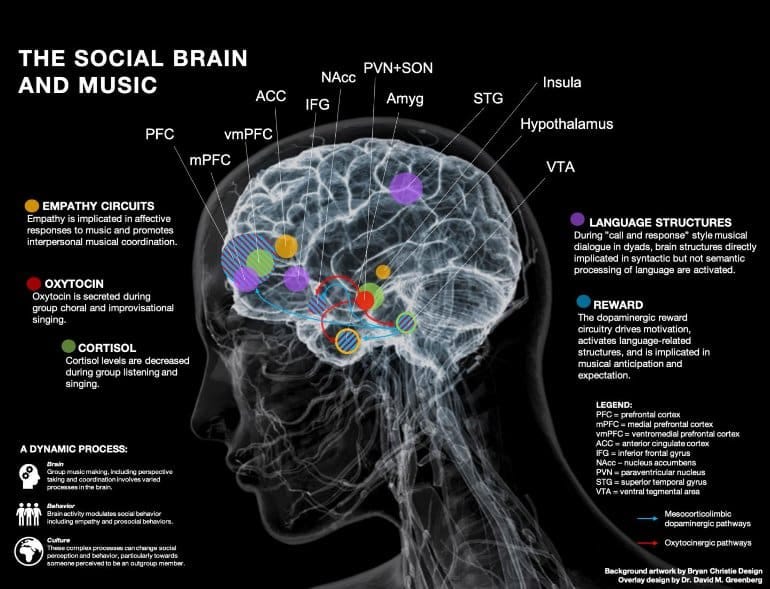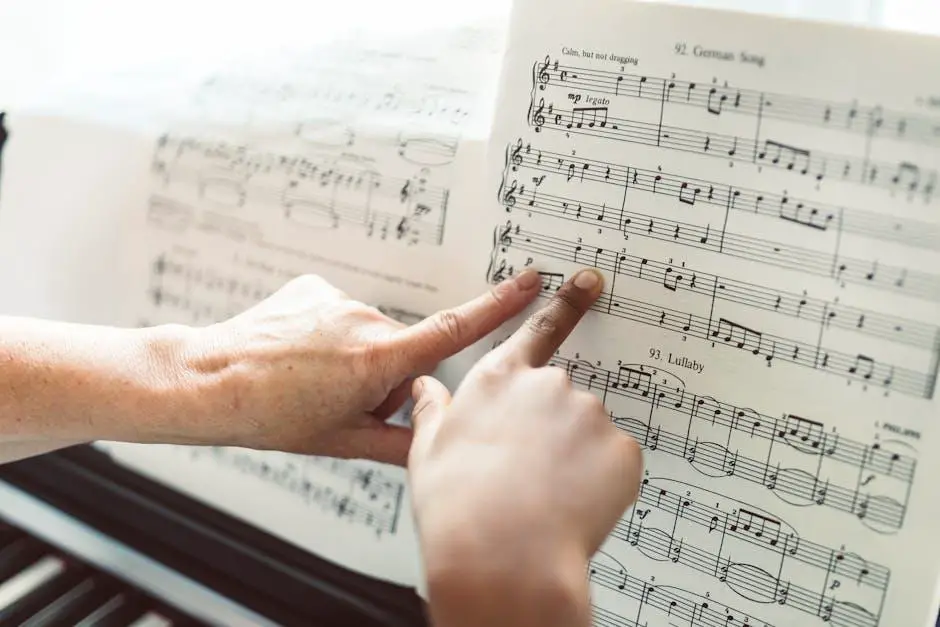Have you ever wondered why major chords have such a magical, enchanting quality to them? It’s like they have the power to make even the grumpiest of cats start purring and the most stoic of statues bust a move. Well, fear not, fellow music lovers, for we are about to embark on a journey to decode the secret sorcery behind major chords. Get ready to uncover the mystery behind these spellbinding harmonies and maybe even learn a few tricks to make your own music sparkle and shine. So grab your wizard hat and wand (or, you know, your favorite instrument) and let’s dive into the enchanting world of major chords!
Contents
- 1 The Harmonic Foundation of Major Chords
- 2 Exploring the Vibrational Synchrony in Major Chords
- 3 The Psychological Impact of Major Chords in Music
- 4 Unraveling the Cultural Significance of Major Chords Across Genres
- 5 The Role of Major Chords in Musical Storytelling
- 6 Advancements in Understanding the Acoustic Properties of Major Chords
- 7 The Future of Major Chords in Evolving Music Trends
- 8 FAQs
- 9 Unravel the Mysteries of Major Chords
The Harmonic Foundation of Major Chords
So, major chords. They’re like the cool kids of the music world, always hanging out together and spreading good vibes. But did you ever stop to think about what makes them so harmonious? Let’s break it down, shall we?
First off, major chords are made up of three notes: the root, the third, and the fifth. It’s like a musical trio where everyone brings something different to the table, yet they somehow just click. The root sets the foundation, the third adds a bit of flavor, and the fifth provides that extra oomph. Together, they create a harmonious blend that just makes you want to sing along.
But wait, there’s more! Major chords follow a specific pattern of intervals to create that perfect harmony. The root and the third are four half steps apart, while the third and the fifth are three half steps apart. It’s like they have their own secret code to creating magic, and we’re all just lucky enough to listen in.
So next time you hear a major chord, take a moment to appreciate the harmonic foundation that makes it all possible. It’s like a musical love story unfolding right before our ears, and we’re all just along for the ride. Keep on harmonizing, major chords, we’re all rooting for you!

Exploring the Vibrational Synchrony in Major Chords
Ever wondered how major chords create that harmonious and vibrant sound? It all comes down to vibrational synchrony, my friends! Major chords consist of three notes played simultaneously - the root, the third, and the fifth. These notes vibrate at specific frequencies that complement each other perfectly, creating a sense of balance and euphony that tickles the auditory senses.
When you play a major chord on a piano or guitar, the vibrations of each note interact with one another in a way that is pure magic (or physics, depending on how you look at it). The frequencies of the root, third, and fifth notes align in such a way that they reinforce each other, amplifying the overall sound and giving major chords their signature cheerful and uplifting quality.
Now, imagine a world where major chords don’t follow the rules of vibrational synchrony. It would be like a chaotic cacophony of clashing frequencies, causing ear-splitting dissonance and possibly triggering a musical apocalypse (okay, maybe that’s a bit dramatic, but you get the point). Thankfully, major chords stay in sync, creating a harmonic bliss that music lovers around the world can’t get enough of.
So, the next time you find yourself jamming out to your favorite major chord progression, take a moment to appreciate the vibrational synchrony at play. It’s the secret ingredient that makes major chords so darn catchy and delightful!

The Psychological Impact of Major Chords in Music
Major chords in music have a profound psychological impact on the human brain. These happy, uplifting chords have the power to make us feel like we’re floating on cloud nine, soaring through the skies with unicorns and rainbows. It’s like a musical serotonin boost that instantly puts a smile on our faces and a skip in our step.
When we hear major chords, our brains release a surge of feel-good chemicals that make us feel all warm and fuzzy inside. It’s like being wrapped in a big, cozy blanket of musical joy. We can’t help but tap our feet, nod our heads, and maybe even break out into an impromptu dance party. Major chords are like musical happy pills that instantly brighten our day.
Studies have shown that listening to music with major chords can help reduce stress, anxiety, and even improve our overall mood. It’s like a musical therapy session that lifts our spirits and rejuvenates our soul. So the next time you’re feeling down or in need of a pick-me-up, just crank up the volume on your favorite major chord-filled playlist and let the positive vibes wash over you.

Unraveling the Cultural Significance of Major Chords Across Genres
Major chords are like the chameleons of the music world, adapting to their surroundings and taking on different meanings depending on the genre they find themselves in. Let’s take a closer look at how major chords are used across various genres and what they symbolize in each.
In pop music, major chords are like the popular kids in high school – always at the center of attention, bright and shiny, and impossible to ignore. They convey a sense of happiness, optimism, and catchy hooks that get stuck in your head for days. Think of your favorite bubblegum pop song – chances are it’s full of major chords that make you want to dance and sing along with abandon.
On the other hand, in rock music, major chords take on a rebellious edge, like a leather jacket-wearing bad boy who plays by his own rules. They can signify power, defiance, and a middle finger to the status quo. Picture a guitar riff in a classic rock anthem – you can bet there’s a major chord in there somewhere, cranked up to eleven and ready to take on the world.
But major chords aren’t just confined to pop and rock – they also make appearances in genres like country, jazz, and even classical music, each time bringing a different flavor and nuance to the table. Whether they’re twanging in a country ballad, swinging in a jazz standard, or soaring in a symphonic masterpiece, major chords continue to prove their versatility and cultural significance across a wide range of musical styles.

The Role of Major Chords in Musical Storytelling
Major chords are like the fairy godmother of the musical world – they swoop in with their cheery, optimistic vibes and sprinkle a little magic dust on your ears. These chords are the musical equivalent of a protagonist in a feel-good movie, always adding that extra dose of sunshine to the storyline.
When major chords make an appearance in a musical piece, they have the power to lift your spirits and make you want to bust out some interpretive dance moves. They’re like the friend who shows up just when you need a pick-me-up, armed with a playlist of catchy tunes and a contagious smile.
Think of major chords as the color pink in a painting – they add a pop of brightness and playfulness that can’t help but make you feel good. They’re the musical equivalent of a warm hug on a cold day, wrapping you up in their feel-good vibes and reminding you that everything is going to be okay.
So next time you’re listening to a song and those major chords come in, let yourself be swept away on a wave of happiness and good vibes. Major chords are the unsung heroes of musical storytelling, bringing that extra touch of magic and joy to every melody they grace.
Advancements in Understanding the Acoustic Properties of Major Chords
Have you ever wondered why major chords sound so pleasing to the ear? Well, wonder no more because researchers have made significant ! No longer will you have to nod along to music pretending you know what’s going on; now you can impress your friends with your newfound knowledge.
So, what makes major chords sound so harmonious? It turns out that major chords are made up of three notes – the root, the third, and the fifth - that are in perfect mathematical ratios to each other. This means that when these notes are played together, they create a sense of resolution and stability that just sounds right. Who knew math could actually be cool?
But wait, there’s more! Researchers have also discovered that major chords have a unique ability to evoke specific emotions in listeners. For example, a C major chord is often associated with feelings of happiness and contentment, while an F major chord might evoke a sense of grandeur or triumph. It’s almost like major chords have the power to control our emotions…scary, right?
So, next time you’re listening to your favorite song, take a moment to appreciate the amazing science behind those major chords. Who knows, you might just start hearing music in a whole new way!
The Future of Major Chords in Evolving Music Trends
With the ever-changing landscape of music trends, it’s interesting to ponder what the future holds for major chords. Will they continue to reign supreme or will they become a relic of the past? As musicians experiment with new sounds and genres, the fate of the trusty major chord hangs in the balance.
One thing to consider is the rise of alternative tunings and microtonal scales. These unconventional approaches to tuning can create a whole new sonic palette, making major chords seem somewhat mundane in comparison. Who needs a plain ol’ major chord when you can explore the depths of a just intonation scale?
On the other hand, major chords have stood the test of time for a reason. They’re simple, familiar, and undeniably catchy. In a world where music is becoming increasingly complex and fragmented, major chords provide a sense of comfort and stability. Plus, let’s face it, everyone loves a good sing-along chorus featuring a catchy major chord progression.
So, as we look to , one thing is certain – they may wax and wane in popularity, but they’ll always have a special place in our musical hearts. Long live the almighty major chord!
FAQs
What makes major chords sound so pleasing to our ears?
Major chords are like the donuts of the music world – they’re sweet, satisfying, and leave you craving more. The secret sauce behind their enchanting sound lies in the combination of the root note, third note, and fifth note of the scale all coming together in perfect harmony. It’s like a musical hug for your soul.
Why do major chords evoke different emotions?
Just like people at a rollercoaster, major chords can take you on a wild ride of emotions. Whether it’s the uplifting joy of a sunny day or the bittersweet nostalgia of a fond memory, major chords have the power to tap into your feelings and whisk you away on a musical journey. So buckle up and enjoy the ride!
How can I incorporate major chords into my own music?
Adding major chords to your musical repertoire is like adding sprinkles to your ice cream – it just makes everything better. Start by experimenting with different chord progressions and see how they can elevate your melodies to new heights. Don’t be afraid to get creative and let your inner Mozart shine through!
Are there any famous songs that prominently feature major chords?
Major chords have been the building blocks of countless hit songs throughout history. From the feel-good vibes of “Happy” by Pharrell Williams to the anthemic power of ”Don’t Stop Believin'” by Journey, major chords have a way of captivating listeners and leaving them humming along for days. So go ahead, crank up the volume and let those major chords work their magic!
Unravel the Mysteries of Major Chords
And there you have it, folks! The secrets of major chords have been laid bare before your very eyes. Now armed with this knowledge, you can dazzle your friends with your musical prowess and maybe even write the next chart-topping hit!
So go forth, brave adventurers of the musical realm, and continue to decode the enchantment of major chords. Remember, the power of music lies in your hands – and with a little bit of practice, you’ll be making sweet musical magic in no time.
Until next time, keep on strumming and keep on dreaming. Happy playing!



